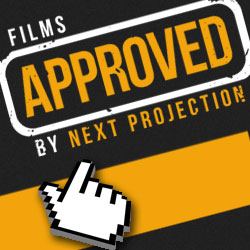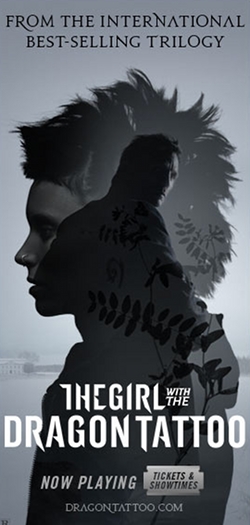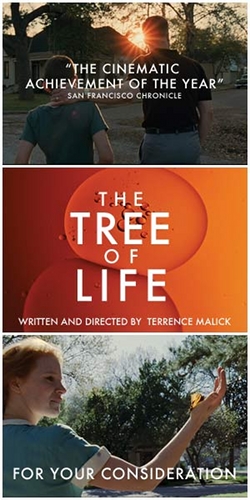Review: Time of the Wolf (2003)
The following review continues Ronan Doyle’s Michael Haneke Director Spotlight.
There is a great homogeneity to Haneke’s filmmaking, a consistency of style and substance that makes each of his works distinctly recognisable as “un film de Michael Haneke” however far they might stray from each other. Arguably, none does so more than Time of the Wolf, setting itself in some indiscriminate future where French society appears to have collapsed in the wake of an unexplained apocalyptic event. A director firmly committed to highlighting and critiquing issues of our society and of our species in the here and now, it may have seemed initially strange for Haneke to turn his attention to what might be classed a genre film rather than his typical intimate personal drama.
Like The Seventh Continent and Funny Games before it, Time of the Wolf introduces the central family unit at its heart in their vehicle, as they glide through a maze of trees toward their weekend cabin in the country. One of Haneke’s great trademarks is his character names: of his ten films to date, seven have featured the couple Anne and Georges (or their Germanic or English equivalents), generic incarnations of bourgeois European society. From their names alone, we already know much about these characters; Haneke has developed an interesting narrative shorthand that allows him to skip the trouble of introducing in detail their life and work. In Time of the Wolf, they have two children: Benny and Eva, also names that have previously appeared in the Haneke oeuvre. This is the prototypical middle-class family, the prime scaled-down manifestation of society.
…he deviates starkly from the generic formula, the “disaster” here little more than a means by which to push his characters to their limits.
 A director ever recognisable for his heavily realist aesthetic, Haneke’s approach to Time of the Wolf firmly sets it aside from the typical “post-apocalyptic” movie format. Unsurprisingly, he deviates starkly from the generic formula, the “disaster” here little more than a means by which to push his characters to their limits. His is a cinema predominantly concerned with the intimacies of human behaviour and nature, each of his six prior films grappling with ideas of what it means to be human; specifically our remarkable capabilities for cruelty in our interactions with each other and the ways in which society shapes—or more often misshapes—us. By putting his characters in an extraordinary situation such as this, Haneke forces them to reveal who they really are, and uses this to expose the truth of what humanity really is when the illusion of civility is stripped away.
A director ever recognisable for his heavily realist aesthetic, Haneke’s approach to Time of the Wolf firmly sets it aside from the typical “post-apocalyptic” movie format. Unsurprisingly, he deviates starkly from the generic formula, the “disaster” here little more than a means by which to push his characters to their limits. His is a cinema predominantly concerned with the intimacies of human behaviour and nature, each of his six prior films grappling with ideas of what it means to be human; specifically our remarkable capabilities for cruelty in our interactions with each other and the ways in which society shapes—or more often misshapes—us. By putting his characters in an extraordinary situation such as this, Haneke forces them to reveal who they really are, and uses this to expose the truth of what humanity really is when the illusion of civility is stripped away.
With its director’s signature use of long takes and lack of score, Time of the Wolf gives us what must be one of the most realistic takes on an apocalyptic future the screen has seen. Gone is the melodrama of typical portrayals of the world’s end, replaced with the unrelentingly cold outlook of Haneke’s camera. Different though this may be from a generic portrayal of an apocalyptic scenario, it is undoubtedly Haneke’s most straightforward narrative structure to date. Precisely one third of the film’s running time concerns the family’s struggle to survive in this desolate land after they are ousted from the safety of their cottage by a shotgun-wielding family. The second third sees them join a community in an abandoned train station, hopefully waiting for the tracks outside to rumble with the sounds of salvation. In the final third, the narrative again shifts, once more at an exact interval. The tri-part structure has informed Haneke’s work in the past, perhaps most notably in The Seventh Continent, but here it is timed with mathematical precision, the characters ousted from whatever comforts they may have found with clockwork routine. Time of the Wolf is more driven by a typical narrative structure than any other of Haneke’s films; it is perhaps because of this that it is less successful in the conveying of its ideas than his others.
Haneke has always used his characters as a cipher through whom to view the world at large and the society we have constructed within it. Here he uses an imagined world as a way to look at his characters, and the way they function when such a society begins to crumble. The fragility of society seems Time of the Wolf’s primary preoccupation, the rapidity with which humanity here returns to its animalistic nature in the face of disaster saying much about Haneke’s view of how strong our social structure really is. Effective though it is in positing these views, however, Time of the Wolf seems to lack something of the sharpness of each of his films to this point. Perhaps it is the formulism of the narrative, perhaps the conceit of an imagined world, perhaps simply because the themes Haneke explores are probed with less vigour than usual, this falls short of his strongest work. Of course, even the weakest of Hanekes outshines the strongest of most others working in film, but Time of the Wolf is a lesser offering from the director, a lower-tier output which lacks something of the vitriolic sensibility his best work is characterised by.
The fragility of society seems Time of the Wolf’s primary preoccupation, the rapidity with which humanity here returns to its animalistic nature in the face of disaster saying much about Haneke’s view of how strong our social structure really is.
 Its inability to function on quite the level of those great works that preceded it does not prevent the film from attaining a power and resonance of its own, however. Time and again, Haneke has proven himself as a skilled director of young actors, most notably and unforgettably Arno Frisch in Benny’s Video. Time of the Wolf displays some of the best work he has achieved with the younger among his cast. In addition to Anaïs Demoustier and Lucas Biscombe as Anne’s children, Hakim Taleb plays the role of a young boy fending for himself in this new world. The three between them embody the essential innocence of a lost humankind in this lawless land, clueless as to what to do and how to continue. Benny in particular demonstrates this, his strange activities throughout the film providing some of its most interesting moments. When the rest of his party gallop after a passing train, eagerly attempting to flag it down, he stays behind and sits down on the grass. The young Biscombe’s face is cryptic and enigmatic, his performance far outshining that of almost everybody else in the film. His role is paramount in the film’s penultimate scene: the one truly and undeniably great moment of the film, and one of the most brilliant sequences Haneke has ever shot.
Its inability to function on quite the level of those great works that preceded it does not prevent the film from attaining a power and resonance of its own, however. Time and again, Haneke has proven himself as a skilled director of young actors, most notably and unforgettably Arno Frisch in Benny’s Video. Time of the Wolf displays some of the best work he has achieved with the younger among his cast. In addition to Anaïs Demoustier and Lucas Biscombe as Anne’s children, Hakim Taleb plays the role of a young boy fending for himself in this new world. The three between them embody the essential innocence of a lost humankind in this lawless land, clueless as to what to do and how to continue. Benny in particular demonstrates this, his strange activities throughout the film providing some of its most interesting moments. When the rest of his party gallop after a passing train, eagerly attempting to flag it down, he stays behind and sits down on the grass. The young Biscombe’s face is cryptic and enigmatic, his performance far outshining that of almost everybody else in the film. His role is paramount in the film’s penultimate scene: the one truly and undeniably great moment of the film, and one of the most brilliant sequences Haneke has ever shot.
Concluding with an unforgettable ending infinitely more powerful than anything which came before it, Time of the Wolf stands as the least successful of Haneke’s films. It is a mark of his great skill as a filmmaker that even here, in what could be classed his weakest work, he says profound things about the nature of humanity and the society we have built to protect ourselves from the reality of the world. Expressing itself poetically through the innocence of childhood and the vast uncertainty of nature, Time of the Wolf could easily have been hailed as a masterpiece had it not sprung from a man whose prior greatness eclipsed it.
-
http://twitter.com/NextProjection Christopher Misch
-
http://twitter.com/baronronan Baron Ronan Doyle


















 Review: Funny Games (2007)
Review: Funny Games (2007) Review: Osaka Elegy (1936)
Review: Osaka Elegy (1936) Review: Miss Bala (2011)
Review: Miss Bala (2011) Review: Hidden (2005)
Review: Hidden (2005) Review: Watching TV With The Red Chinese (2012)
Review: Watching TV With The Red Chinese (2012)


